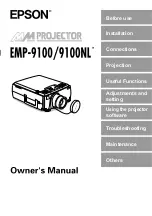
Page 12
3.5.3
Adjusting the Hysteresis
The hysteresis is the Temperature range over which the alarm/control output
remains switched on, once the trip point has been exceeded.
For example, if the limit is set to 25.0
O
C, as a “too low” trip point, with a
hysteresis of ±1.0
O
C, the alarm/control output is switched ON when the reading
goes to 24.0 (i.e. 25.0 - 1.0). The output is not switched OFF until the reading
goes back up to 26.0 (i.e. 25.0 + 1.0).
The hysteresis stops the relay “chattering” around the set point, by providing a
buffer between the points at which the output is switched ON and OFF. This
feature can significantly increase the life of heaters, pumps etc.
The factory-set hysteresis is approximately ±1.0
O
C, as in the example above. The
hysteresis can be increased to as high as ±4.0
O
C with the
HYSTERESIS
trimmer
in the terminal area. Turning the
HYSTERESIS
clockwise increases the
hysteresis and turning it anti-clockwise decreases the hysteresis.
TPS DOES NOT recommend that this setting be altered, unless it is absolutely
necessary.
The
HYSTERESIS
trimmer should only be adjusted a little at time. The process
being controlled should then be closely monitored over a time to ensure that the
desired control is being achieved.











































